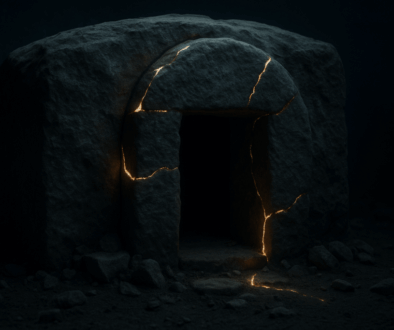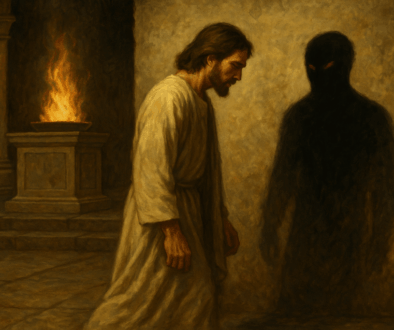Not Just Blood: How Biblical Sacrifice Speaks to the Fragmented Soul
Let’s be honest—when we read about animal sacrifices in the Old Testament, it can feel… alien. Maybe even disturbing. Slaughtering a goat to “atone for sin” doesn’t translate easily into our modern spiritual or psychological frameworks.
But what if these ancient rituals weren’t just about sin management?
What if they were a symbolic language—a soul ritual—for something we still ache for today?
Wholeness. Reconnection. Meaning.
If we read these texts through a deeper lens—psychological, existential, even archetypal—we begin to see that what happened at the altar wasn’t just about religion. It was about integration. About turning toward what’s broken, owning it, offering it, and stepping toward something more whole.
🩸 Facing the Shadow: Sacrifice as Confrontation
In Jungian psychology, the shadow is the part of us we’d rather not see—guilt, aggression, fear, shame, selfishness. And ancient Israel didn’t just try to “pray it away.” They brought it to the surface—publicly, viscerally, ritualistically.
📖 “He shall lay his hand on the head of the burnt offering, and it shall be accepted for him to make atonement.”
—Leviticus 1:4
Imagine it. Laying your hands on a living creature. Feeling its breath. And then watching it die.
This wasn’t just performance. It was embodied shadow work. A ritual confrontation with the truth:
“This part of me is out of alignment with love. I see it. I don’t deny it. I offer it.”
You couldn’t intellectualize your way through guilt. You had to watch it bleed.
🧠 Depth Psychology Frame: This is archetypal. From a psychosynthesis lens, it’s the disowned self being brought into the light of the higher Self—offered not to be punished, but to be transformed. To be reintegrated into a fuller, more conscious identity.
🤝 From Ego to Communion: The Relational Nature of Sacrifice
Sacrifice wasn’t just a private confession booth. It was communal. Systemic. Social.
It said:
“My actions affect more than just me.”
“My healing is connected to yours.”
“My reconciliation includes the earth, my family, my people, and my God.”
📖 “You shall bring your offering to the priest, and he shall make atonement for you, and you shall be forgiven.”
—Leviticus 4:26
🧠 Systemic Insight: In modern terms, this is relational restoration. Restorative justice, 12-step recovery, group therapy—all modern echoes of this ancient reality: we break things together, and we heal together.
When sin is rupture, sacrifice is reweaving the web.
🔥 Existential Longing: Atonement as Meaning-Making
🔍 The Hebrew Word: כָּפַר (Kaphar)
Root meaning: to cover, to reconcile, to purge
Strong’s Concordance: H3722
But let’s be clear—kaphar doesn’t mean “cover up” as in hide. It’s more like binding a wound. Protecting it. Holding it in a sacred space while it heals. Not erased. Not ignored. Integrated.
At-one-ment.
The return to wholeness.
🧠 Existential Frame: We all carry a low hum of disconnection. From God. From ourselves. From meaning.
We feel it as:
- Guilt (what I did)
- Shame (what I am)
- Mortality (what I cannot avoid)
- Isolation (what separates me)
- Meaninglessness (what numbs me)
In the ancient world, sacrifice ritualized that confrontation. It created a sacred structure for metabolizing disconnection.
It didn’t suppress guilt. It gave it a form, a voice, a path.
“I’m not okay. But I’m not abandoned.”
“This matters. I matter. And there is a sacred way back.”
🧠 Psychospiritual Integration: The altar was a container—a psychological and spiritual vessel for grief, guilt, misalignment.
Like therapy. Like confession. Like breathwork.
It was a place to feel, name, and release what we couldn’t carry alone.
Christ as Archetypal Sacrifice: Love That Integrates
From a Christian perspective, the entire sacrificial system is a symbolic foreshadowing. But not of wrath or divine rage.
Of radical empathy.
📖 “Behold, the Lamb of God, who takes away the sin of the world.”
—John 1:29
🧠 Jungian Frame: Christ becomes the archetype of integration—the Self that holds all opposites:
- Human and Divine
- Light and Shadow
- Death and Resurrection
He doesn’t reject our brokenness—He absorbs it without returning shame.
He doesn’t bypass guilt—He enters it and transforms it.
He becomes both priest and offering—the bridge back to wholeness.
In this light, the Cross isn’t punishment.
It’s participation.
God entering the brokenness with us.
Not to condemn it. But to transfigure it.
🌱 Practicing Modern Sacrifice
How do these ancient, blood-soaked rituals shape us today—spiritually, psychologically, relationally?
🔍 1. Name the Shadow
Stop running from your darkness. Own it. Speak it.
In therapy, in confession, in the mirror.
Don’t just rationalize your misalignment. Witness it.
📖 “The sacrifices of God are a broken spirit; a broken and contrite heart…”
—Psalm 51:17
🤲 2. Offer, Don’t Perform
Ancient sacrifices weren’t about earning. They were about offering.
There’s a difference between performing for acceptance and showing up as you are.
Let your tears, your fears, your longings be your offering.
🫂 3. Heal in Community
We don’t sacrifice in isolation. Healing comes in relationship.
Let your struggle be witnessed. Let others hold space. We integrate better together.
🕊 4. Let the Old Die
In Jungian and existential terms, death is symbolic.
Something must end for something new to begin.
Let your false self fall. Let outdated identities be burned on the altar.
You’re not being punished.
You’re being invited to resurrect.
Final Thought: It Was Never Just About Blood
It was never just about slaughter. It was about transformation.
Rituals evolve. But the soul’s need remains the same:
To face what’s real.
To offer it honestly.
To return to love, to life, to God.
📖 “I desire mercy, not sacrifice.”
—Hosea 6:6
The rituals were never the point.
The heart behind them was.
And that heartbeat still echoes—
—in the therapist’s chair
—in a whispered prayer
—in a hard conversation
—in every sacred act of turning toward wholeness.
You don’t need to be perfect.
You just need to show up.
Offer what you can.
And trust that grace still covers what you can’t.



